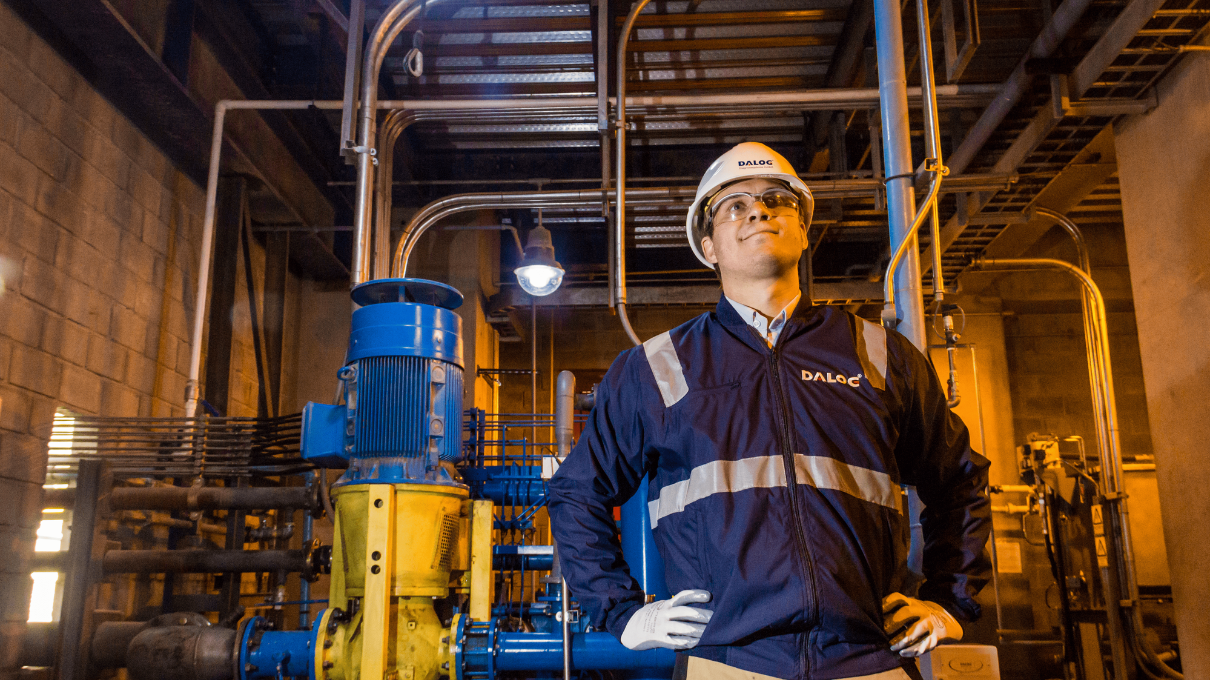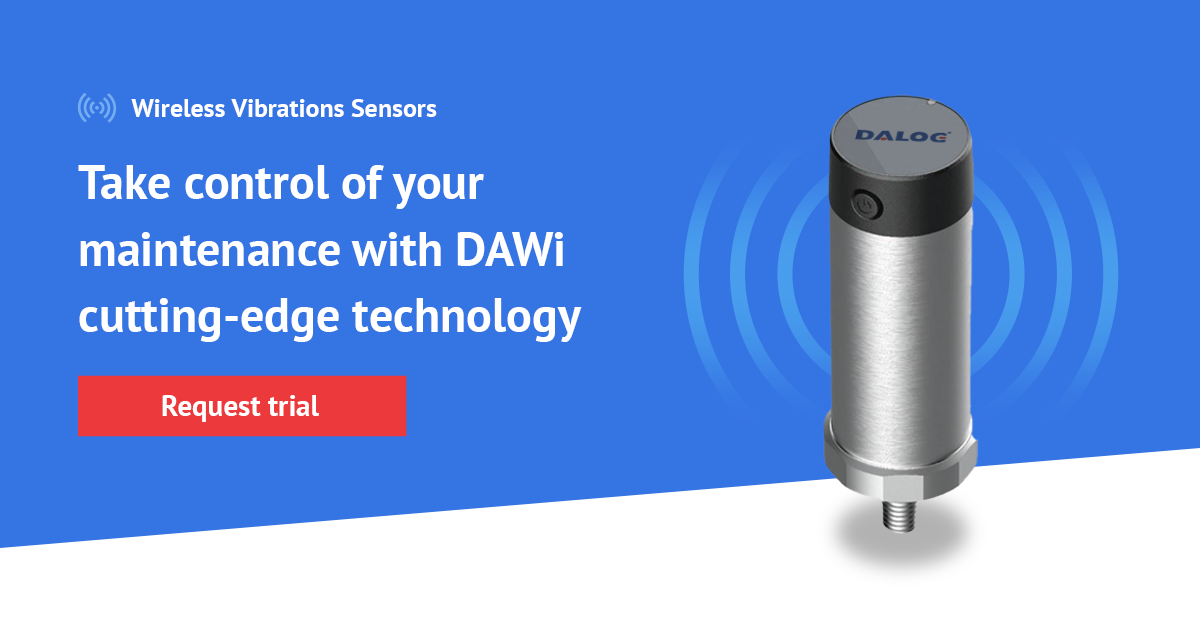How to Get Started With a Predictive Maintenance Program?
Online condition monitoring is a critical tool for predictive and proactive maintenance. It can help you keep your equipment running smoothly, avoid downtime, and extend the lifespan of your assets.
Predictive maintenance is all about using data to predict when equipment will fail and take action before that happens. You can avoid problems, reduce costs, and improve your maintenance processes with the correct monitoring tools.
Learn more about predictive maintenance, the types of equipment that can be maintained, the benefits of implementing such a strategy, and how to get started with a predictive maintenance program.
- Definition and Explanation of Predictive Maintenance
- Predictive Maintenance vs. Preventive Maintenance
- Types of Equipment and businesses that benefit from Predictive Maintenance
- Benefits of Implementing a Predictive Maintenance Strategy
- How to Get Started with Predictive Maintenance
- Real-Life Examples of Predictive Maintenance
- Predictive Maintenance Tips
Definition and Explanation of Predictive Maintenance
Predictive Maintenance uses condition data to determine when corrective maintenance on machine components such as pumps, motors, bearings, gears, fans, and other rotating industrial devices should be performed to avoid future failures and unplanned downtime.
This type of maintenance goes beyond traditional preventive care, which is based on time or usage, and instead focuses on the actual condition of the equipment. By using real-time data to monitor the health of equipment, predictive maintenance can help you detect problems before they become critical and avoid unexpected downtime.
Predictive Maintenance vs. Preventive Maintenance
Preventive maintenance and predictive maintenance are two different strategies for maintaining equipment.
Preventive maintenance is based on time or usage and involves regular maintenance at set intervals to keep equipment running smoothly.
On the other hand, predictive maintenance uses data and technology to determine the health of equipment and predict when maintenance is required.
While preventive maintenance can help reduce the risk of equipment failure, it can also lead to over-maintenance and increased costs.
Predictive maintenance is more efficient and cost-effective, as it only performs maintenance when required.
Types of Equipment and Businesses That Benefit From Predictive Maintenance
Predictive maintenance can be applied to various equipment, including machinery, vehicles, production equipment, and more. The type of equipment that can be maintained using predictive maintenance depends on the kind of data that can be collected and analyzed.
For example, vibration data can be used to monitor the health of machinery, while temperature data can be used to monitor the health of electrical equipment. Any equipment that generates data can be maintained using predictive maintenance.
Predictive maintenance can be used on a wide range of equipment, including:
Mechanical equipment such as pumps, motors, and gears, to detect issues such as vibration, temperature, and lubrication levels in mechanical equipment, which can help prevent breakdowns and prolong the lifespan of the equipment.
Electrical equipment such as generators, transformers, and switchgear, to detect issues such as current and voltage fluctuations.
Industrial equipment such as conveyors, production lines, and packaging equipment, to detect issues such as vibration, temperature, and lubrication levels in industrial equipment.
Transportation equipment such as vehicles, trains, and airplanes, to detect issues such as vibration, temperature, and lubrication levels in transportation equipment.
HVAC systems: These systems can benefit from predictive maintenance by monitoring the temperature and humidity levels, as well as the performance of the fans and compressors.
Medical equipment such as X-ray machines, CT scanners, and MRI machines, to detect issues such as vibration, temperature, and lubrication levels in medical equipment.
IoT devices such as sensors, cameras, and other connected devices. These devices can generate a large amount of data that Businesses can use to predict when equipment is likely to fail.Predictive maintenance can be beneficial to a wide range of businesses, including cement, mining, metallurgy, power plants, plastics, or transportation.
Benefits of Implementing a Predictive Maintenance Strategy
Implementing a predictive maintenance strategy can bring numerous benefits to a business, including:
Increased Equipment Lifespan: Predictive maintenance can help extend the lifespan of your equipment by identifying problems before they become critical and performing maintenance only when required.
Reduced Downtime: By using data to predict when maintenance is required, predictive maintenance can help you avoid unexpected downtime and keep your equipment running smoothly.
Improved Equipment Performance: Predictive maintenance can help improve the performance of your equipment by identifying problems early and addressing them before they become critical.
Lower Maintenance Costs: Predictive maintenance can help reduce maintenance costs by lowering over-maintenance and only performing maintenance when required.
Increased Safety: Predictive maintenance can help improve safety by identifying potential hazards before they become critical and taking action to prevent them.
Better Data Analysis: Predictive maintenance provides access to real-time data that can be used to make informed decisions about maintenance and improve overall maintenance processes.
Improved Resource Allocation: Predictive maintenance can help improve resource allocation by providing insights into the health of your equipment and allowing you to prioritize maintenance efforts.
Increased Equipment Reliability: By using data to predict when maintenance is required, predictive maintenance can help improve the reliability of your equipment and reduce the risk of equipment failure.
Learn more about the benefits of Predictive Maintenance from our free eBook The Reliability Manager’s Plan: How to Choose the Most Cost-Effective Solution for Predictive Maintenance
How to Get Started with Predictive Maintenance
Predictive maintenance can seem complex and overwhelming, but it doesn't have to be. By following these simple steps, you can get started with predictive maintenance and start realizing the benefits of this powerful tool.
Identify Critical Equipment
- The first step to implementing a predictive maintenance program is to identify the equipment critical to your operations and would cause significant downtime if it failed. This could include machinery, vehicles, or other assets essential to your business.
- Assess the age, usage, and condition of the equipment.
- Consider the cost of the equipment, as well as the cost of repairs and downtime.
- Research different predictive maintenance technologies and choose the best fit for your needs and budget.
Asses Equipment Condition
- Conduct a thorough inspection of the equipment to identify any potential issues.
- Create a maintenance plan that addresses any issues identified during the assessment.
Select the Best Predictive Maintenance Solution for Your Business
- At DALOG, we go one step further and provide predictive maintenance (high frequency, analysis, statistical modeling, and forecasting) and prescriptive maintenance (automatic protective actions, load and performance assessment, and actionable insights).
- We offer prescriptive maintenance for your support equipment with our DAWi Wireless Solution that includes a 3-axis vibration and temperature sensor, wirepas mesh network, and a gateway with ethernet or Cellular Network.
- Our DAWi Wireless Solution is a complete sensor-as-a-service model with an easy trial and has full integration into DALOG platforms and remote analysis service.
Train Employees
- Train employees on how to use predictive maintenance technologies and interpret the data.
- Ensure employees understand the importance of predictive maintenance and how it can benefit the company.
- Provide ongoing training to keep employees up-to-date on the latest technologies and best practices.
- We offer Condition Monitoring Training, where we bring together maintenance, automation, and process engineers to understand the capabilities of modern condition monitoring technology.
Collect Data
Once you have identified your critical equipment, the next step is collecting health data. This can be done using a variety of sensors and monitoring devices, such as vibration, temperature, or pressure.
Analyze Data
The data collected from your sensors can then be sent to a cloud-based platform for analysis. This could involve using algorithms and machine learning techniques to predict when maintenance is required.
Develop Maintenance Plan
Based on the results of your data analysis, you can develop a maintenance plan tailored to your specific equipment and its needs. This plan should include detailed instructions on when and how maintenance should be performed and a schedule for regular monitoring and analysis.
Implement Maintenance Plan
Once you have developed your maintenance plan, the next step is to implement it. This will involve performing maintenance according to the schedule outlined in your project and regularly monitoring your equipment to ensure that it is functioning as expected.
Continuously Monitor and Improve
Predictive maintenance is an ongoing process, and it is crucial to monitor and improve your maintenance plan over time continuously. By regularly reviewing your data and adjusting your maintenance plan as needed, you can ensure that your equipment is always running smoothly and efficiently.
Real-Life Examples of Predictive Maintenance
Case Study: Wireless Vibration Monitoring in Cement Industry
With a strong return on investment of 20x after two months, a cement factory in Europe managed to save more than 500.000,00 Euros by using DALOG's wireless vibration monitoring system.
At the start of the project, DALOG's team of technicians assessed the machines' health belonging to a cement factory in Italy and discovered the following:
✔ Three assets were in healthy condition, with no action required.
✖ Ten assets indicated an ongoing machine anomaly that must be followed up on but is not critical.
✖ Four assets indicated an alert or dangerous condition that must be closely followed, and maintenance should start planning repair works.
What did we do?
- We mounted wireless vibration sensors radially at the kiln bearings and gateways, connecting sensors directly to the DALOG cloud via a cellular network.
- Total number of Machines Monitored: 17
- Total Number of Wireless Vibration Sensors: 76
- Area Covered: Pyro Processing
- We set clear goals with the plant team to reduce asset indication and alert conditions.
- We set regular reliability meetings with the maintenance and reliability team and DALOG to follow up and improve machine availability.
The result: A strong return on investment of 20x after two months and more than 500.000 Euros saved by using DALOG's wireless vibration monitoring system.
Predictive Maintenance Tips
Start small: It can be tempting to try and implement predictive maintenance on all your equipment at once, but it's essential to start small and work your way up. Start by implementing predictive maintenance on your most critical equipment and expand from there.
Choose the right tools: There are a variety of sensors and monitoring devices available for predictive maintenance, so it's important to choose the right tools for your specific equipment and needs. Consider accuracy, reliability, and ease of use when deciding.
We recommend DAWi, our wireless sensor, for predictive maintenance!
Work with a team: Predictive maintenance involves data analysis, maintenance planning, and implementation, so it's essential to work with a team of experts who have experience in these areas. This could include data scientists, maintenance technicians, and equipment specialists. Our experts serve hundreds of customers worldwide, helping them minimize downtime, optimize their equipment's life cycle, and offer detailed insight into the condition and performance of their machines.
Continuously monitor and improve: As mentioned earlier, predictive maintenance is an ongoing process, so constantly monitoring and improving your maintenance plan over time is crucial. Regularly review your data and make adjustments as needed to ensure that your equipment is always running smoothly and efficiently.
Predictive maintenance is a transformative approach to maintenance that can bring substantial benefits to businesses of all sizes and industries. By proactively monitoring the health of your assets and predicting when maintenance is required, you can minimize downtime, extend the lifespan of your assets, and reduce costs.
If you're interested in taking your maintenance program to the next level, consider using DAWi, our wireless vibration sensor. DAWi provides real-time data on the health of your assets, making it easy to monitor and predict when maintenance is required.
Learn more about DAWi and how it can benefit your business.







